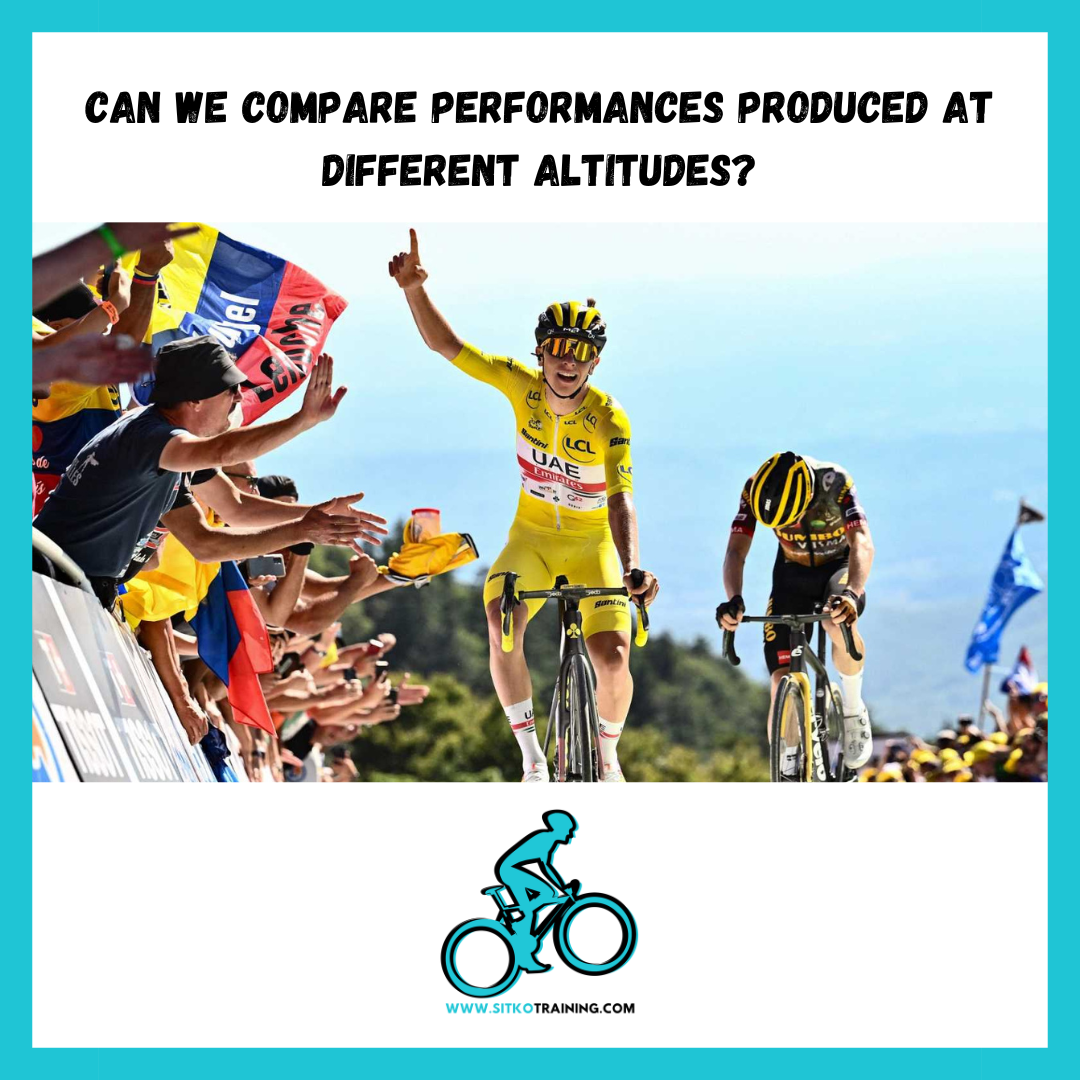
“Vingegaard climbed the final section of the Tourmalet in X time at Y watts, which would equal Z watts produced at sea level.” Phrases like this and other similar ones have been seen in recent days throughout the social networks related to the world of cycling. Despite the fact that the idea of being able to compare performance at completely different altitudes may seem attractive a priori, the theory on which this calculation methodology is based entails important limitations that must be considered and that I discuss in the article that follows below.

It sounds very nice but it is not that simple
We have solid science that shows a reduction in performance associated with altitude, in a more or less linear fashion above 800m. Most of the specialized cycling accounts that make estimates of performance normalized to altitude are based on the information reported in the papers by Wehrlin, Fulco and Hamlin. In these papers (which studied samples of track and field athletes and in a situation of simulation of altitude in a hypobaric chamber) the reduction in performance is quantified using mainly the maximum oxygen consumption. This all sounds great on paper until we look at, one by one, the asterisks associated with this methodology:
-VO2max and power are not reduced in a 1 to 1 correlation: There is science showing VO2max reductions of 4-8% for every 1000m altitude gained and a much smaller reduction in power of 2-4% per 1000m. VO2max is a parameter of maximum performance of cardiorespiratory nature. On the other hand, with the power we are evaluating the mechanical work. Both parameters, although closely related, are not ruled by a perfect relationship. What can we get out of all this? Obviously, although a paper shows that I can lose 5% of oxygen consumption at a certain altitude, my watts do not have to be reflected in the same way.
-Air resistance is reduced at altitude: Although we can assume a reduction in performance at altitude, we must always take into account its beneficial effect on aerodynamics, a factor that, especially at speeds such as those presented by professional cyclists, may compensate somewhat for the observed physiological loss. Assuming that at X meters I am going to go at Y watts less can lead to a large miscalculation, especially in cyclists who are capable of climbing at high speeds.
-Acclimatization has great inter and intra-individual variability: We know that altitude stays reduce the harmful effects associated with hypoxic situations. In addition, the same cyclist can acclimatize differently depending on various factors, not to mention the differences in the acclimatization capacity between cyclists. Comparing, therefore, performances produced at different times to see which is better is a mere chimera oriented more towards hype on social networks than towards a serious scientific analysis.
-We cannot extrapolate results obtained in athletes to cyclists: The science that exists regarding performance at altitude is based mainly on studies carried out with athletes (track and field). Although in both cases we are talking about endurance sports with clear similarities, running has a different motor recruitment pattern, greater use of muscle groups, and a different venous return than cycling. Although they do not go far, the effects of altitude in both disciplines are slightly different.
-A hypobaric chamber is not a mountain: In science, in order to obtain comparable results, it is necessary to use the most standardized means as far as possible. For this reason, the papers we have are generally made with simulated altitudes in a hypobaric chamber. Interestingly, the results obtained in concentrations at altitude are often better than those observed after the use of chambers of this type, so it is certainly possible that there are associated benefits that are not due to mere exposure to a certain air pressure. On a mountain, compared to the valley, regardless of hypoxia, we have changing conditions of humidity, sweating rates, temperature and insolation, so assuming that X performance above is comparable to Y performance below is risky to put it mildly.
Do I mean with all of the above that the estimates we see on social networks are absurd? No, not at all. We have enough information to be able to estimate (being a bit lax, yes) the requirement of an effort depending on the altitude. What we cannot do, under any circumstances, is to assume (as is currently being done) that X effort has been better than another from the same rider the previous year or, what is worse, compare efforts at divergent altitudes in different riders. I have even seen, on social networks, estimated power curves that are being normalised to altitude. With so many variables that we cannot control, going into it, today, belongs more to the realm of science fiction than to the rigor of serious scientific disclosure.
Sebastian Sitko
Professor of Sports Sciences at the University of Zaragoza, Doctor in Sports Sciences, Master’s degree in high performance sports by the French Olympic Committee, National Cycling, Triathlon and Athletics coach and official coach for the American College of Sports Medicine.